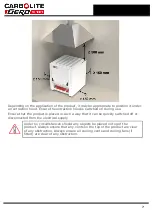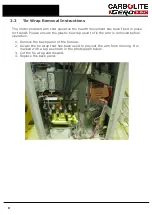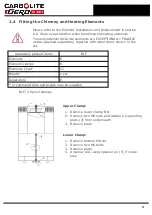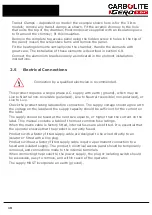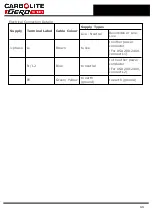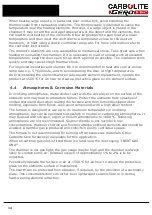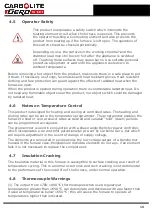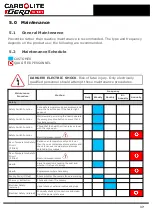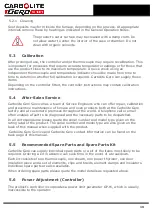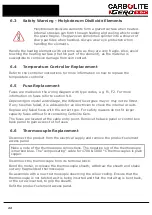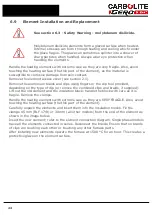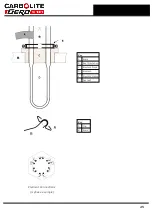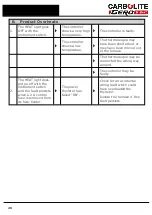
When heating large objects, in particular poor conductors, avoid shielding the
thermocouple from the heating elements. The thermocouple is intended to sense the
temperature near the heating elements. However, if a large object is placed in the
chamber it may record the average temperature of the object and the elements, this
can lead to overheating of the elements. Allow large objects to gain heat at a lower
temperature and then reset the controller to a temperature close to the desired
maximum, or heat using a slowly controlled ramp rate. For more information refer to
the controller instructions.
The product's elements are very susceptible to mechanical shock. Take great care when
loading or unloading the chamber. If it is necessary to load or unload work at elevated
temperatures, keep the door open for as short a period as possible. The insulation cools
quickly and may crack though thermal shock.
For improved insulation and element life it is recommended to heat and cool at a slow
ramp rate e.g. 5 °C/minute, and to avoid opening the door at high temperatures.
On first installing the elements and on subsequent element replacement, operate the
product at 1500 °C for an hour to create a protective glaze on the element surface.
4.4
Atmospheres & Corrosive Materials
In oxidising atmospheres, metal oxides react with the silica layer on the surface of the
elements and may lead to premature failure. Protect the elements from splashes of
molten metal and dust when loading the furnace and from fumes developed when
melting, especially from fluxes. Also avoid compounds with a high alkali content.
The furnace is designed for use up to its maximum temperature in oxidising
atmospheres, but can be operated successfully in neutral or carburising atmospheres. It
may be used with nitrogen, argon or helium atmospheres to 1600 °C. Reducing
atmospheres are not recommended. Sulphur dioxide is not harmful in low
concentrations. However chlorine and fluorine attacks oxidised elements and should be
avoided. A harmful gas is produced and collects in poorly ventilated spaces.
The furnace is not recommended for burning off carbonaceous materials. Other
Carbolite Gero furnaces are available for this application.
When an optional gas inlet is fitted there is a label near the inlet saying "INERT GAS
ONLY".
The chamber is not gas tight, the gas usage may be high and the chamber is always
likely to contain some air. Residual oxygen of approximately 1% to 2% is to be
expected.
Periodically operate the furnace in air at 1500 °C for an hour to ensure the protective
glaze on the elements surface is maintained.
The hearth can be protected from abrasion, if required, by the provision of a secondary
plate. This consumable item can either be in lightweight ceramic fibre or in dense,
hard-wearing alumina refractory.
14
Содержание CARBOLITE GERO 195-1-1013
Страница 29: ...8 0 Wiring Diagrams 8 1 195 1 1013 29 ...
Страница 33: ...Notes Service Record Engineer Name Date Record of Work ...







